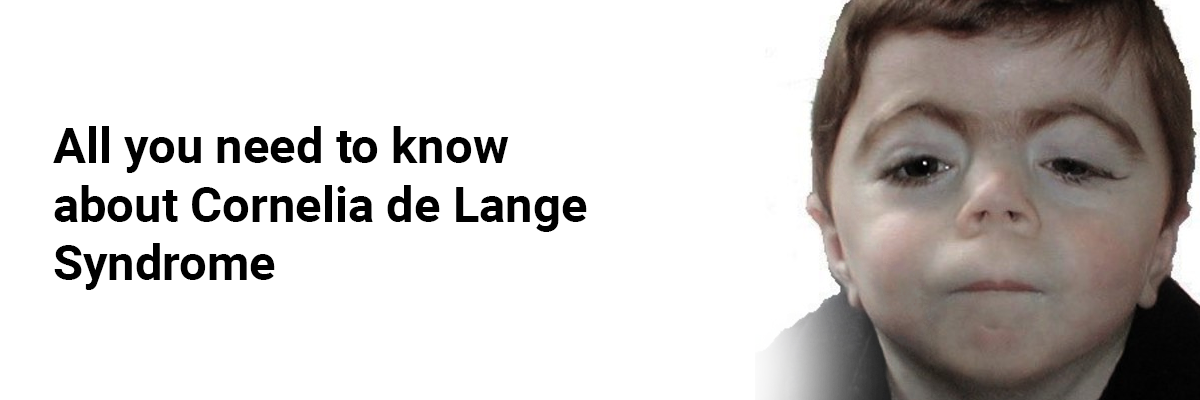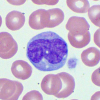
 Mrs. Mayuri Mathur
Mrs. Mayuri Mathur
All You Need To Know About Cornelia de Lange Syndrome
Cornelia de Lange syndrome (CdLS) is an uncommon genetic disorder characterized by distinct facial features, growth delays, limb malformations, behavioral problems, and other symptoms. The severity of the condition can vary, and it can affect various body parts. The syndrome was named after the Dutch pediatrician Cornelia de Lange, who first documented the condition in two children in 1933. It is hard to predict the exact number of cases as mild instances may go undiagnosed.
Cornelia de Lange syndrome (CdLS) is also known by the name -
• BDLS
• Brachmann-de Lange syndrome
• De Lange syndrome
• Typus degenerativusamstelodamensis
Clinical Indicators of Cornelia de Lange Syndrome
Symptoms of Cornelia de Lange syndrome are often identifiable at birth. Individuals with CdLS typically exhibit specific facial features, including arched and thick eyebrows that usually meet in the middle, long eyelashes, low front, and back hairlines, a short and upturned nose, The corners of the mouth turned downwards, narrow upper lip, low-set and distorted ears, and cleft palate. Other abnormalities, which may not be present at birth, include:
• Microcephaly (very small head).
• Growth delays.
• Eye and vision problems.
• Hearing loss.
• Excessive body hair (which may decrease as the child grows).
• Short neck.
• Hand abnormalities, intellectual disabilities, self-injurious behavior, and aggression.
Infants with CdLS may experience feeding difficulties, and children with the syndrome may also have gastroesophageal reflux disease (GERD) and dental problems.
Causes and Risk Factors of Cornelia de Lange Syndrome
Gene mutations are the typical cause of Cornelia de Lange syndrome cases. More than half of the people with the condition have a mutation in the NIPBL gene. The syndrome has also been associated with at least four other gene mutations, including SMC1A, HDAC8, RAD21, and SMC3. These genes' proteins contribute to the structure of the cohesion complex, which aids in guiding development before birth. A mutation in these genes can disrupt the early stages of development, including mental health in early childhood.
Identification and Diagnosis of Cornelia de Lange Syndrome
Cornelia de Lange syndrome diagnosis is often symptomatic (relying on physical features). It can sometimes be detected during a fetal ultrasound, revealing limb abnormalities, a cleft lip, growth delays, an abnormal facial profile, or other signs of CdLS. Other conditions such as diaphragmatic hernia (a hole in the muscle separating the chest and abdomen), kidney anomalies, and congenital heart disease may also indicate CdLS.
Mild cases of the syndrome may be diagnosed later in childhood when subtle signs of CdLS become more apparent, including facial features and intellectual disabilities. Aggressive behavior and self-harm may also become noticeable.
Once diagnosed with CdLS, a child may need to undergo evaluations for medical issues resulting from malformations. This is because about 25% of people with CdLS experience cardiac abnormalities, and 10% have kidney malformations. Regular evaluations such as echocardiography (an ultrasound of the heart to check heart chambers and valves) and renal sonography (an ultrasound of the kidneys) may be necessary to ensure the well-being of individuals with CdLS.
Treatment Modalities for Cornelia de Lange Syndrome
Treatment for Cornelia de Lange syndrome focuses on managing symptoms to enhance the quality of life for individuals with CdLS. Infants benefit from early intervention programs to improve muscle tone, address feeding difficulties, and develop fine motor skills. Growth delays can be addressed through supplemental formulas or the placement of a gastrostomy tube.
As a child grows, physical, occupational, and speech therapy can be beneficial in addressing the challenges associated with CdLS. Surgery may be required to correct skeletal abnormalities or congenital heart problems.
Pediatric mental health professionals can assist in managing the behavioral symptoms of the syndrome. Children with heart or eye issues might have to visit a cardiologist or an ophthalmologist, respectively.
Clinical Complications Associated with Cornelia de Lange Syndrome
While individuals with CdLS typically have a normal life expectancy, certain complications can lead to a shortened lifespan. Unfortunately, some children pass away prematurely due to complications such as recurrent pneumonia, congenital heart defects, gastrointestinal diseases, diaphragmatic hernias, and intestinal issues.
If complications are left untreated or if they keep happening, they can become even worse. But don't worry, with the proper care; your child can live a happy, normal life for many years to come.
The bottom line
Cornelia de Lange syndrome uniquely affects individuals, and signs and symptoms can vary from person to person. If your child is diagnosed with CdLS, their physician will discuss a specific treatment plan with you and may recommend services and support groups to help meet your child's needs. With proper care, they can live an ordinary life.

Mrs. Mayuri Mathur
Mrs. Mayuri Mathur is a Senior Medical Writer (Patient education and digital) and seasoned content creator with a rich tapestry of expertise spanning over ten years. With a diverse background in content creation, she brings a wealth of experience to the table, from crafting insightful medical articles to developing comprehensive patient education materials, dynamic press releases, and captivating brochures and website content. Throughout her illustrious career, she has demonstrated an exceptional knack for distilling complex medical concepts into easily understandable content, making her a trusted resource for both professionals and lay audiences alike. Her meticulous attention to detail and innate creativity have enabled her to deliver content that not only informs but also engages and inspires. Whether elucidating intricate medical procedures or crafting compelling marketing materials, her versatility and dedication shine through in every project she undertakes. Her passion for writing, coupled with her profound understanding, makes her an invaluable asset to any team or project. In a constantly evolving digital landscape, where effective communication is paramount, Mrs. Mayuri Mathur stands out as a beacon of excellence, consistently delivering top-notch content that resonates with audiences across diverse platforms.

.png)

.png)
.png)

.jpg)










Please login to comment on this article